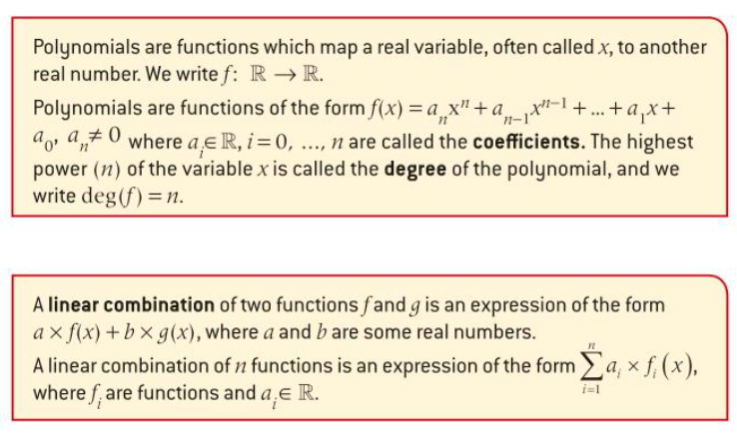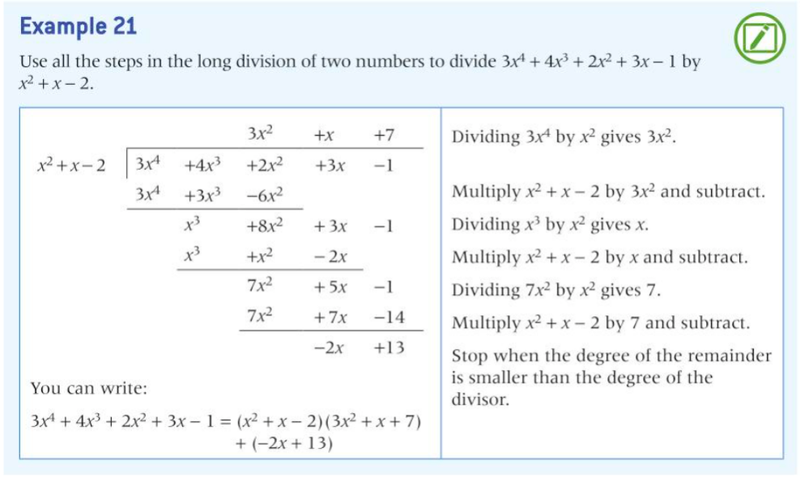What are Polynomials?

- Quadratics, for example, are polynomials!
- So are equations and inequalities of higher powers, such as cubic and quartic equations/inequalities.
- Polynomials can be made of smaller linear functions, just how quadratic functions are made by (a +b)(c+d).
- Massive polynomials can be made by multiplying many linear equations together.
- Just like how we can factorize quadratics, we can also factorize these big polynomials, it just takes a bit more work!
The Factor and Remainder Theorem
- In order to divide two polynomials, you need to use long division.


Polynomial Remainder Theorem

- From this theorem we can see that the remainder for a function f(x) divided by (x-p) is f(p).
- This holds as long as the value for the first term isn't p*x.
Factor Theorem

- This is derived from the polynomial theorem.
- If f(p) = 0, then there is no remainder when the polynomial is divided by (x-p).
Corollary

This theorem is once again derived from the polynomial remainder theorem.
For the linear function ax-b, x = b/a is the zero of the function.
This is like in the polynomial theorem, where the remainder when divided by (x-p) is f(p), as x -p = 0 when x = p.
Roots of a Polynomial
- As polynomials are created by multiplying many linear functions together, the roots of these functions are also the roots of the polynomials.
- The number of linear functions multiplied together depends on the degree of the polynomial.
- Some polynomials can also have repeated roots, where the same linear function is present multiple times, meaning that a polynomial can have a higher degree without having more roots.
- Go to this video for a detailed explanation.
Sources
https://www.slideshare.net/nsimmons/11-x1-t15-04-polynomial-theorems-2012